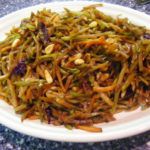Living in the big city does not have to cause your green thumb to wilt. In fact, urban gardening projects are becoming more popular in these modern times, whether the gardening is done indoors, on a small patio outdoors, or the roof of the building in which you live.
Whether your passion is exotic fruit trees, herbs, or growing your own vegetables, there is something for everyone who likes running their fingers through a fresh bag of potting soil. The following tips will breathe new life into your big city gardening project.
Save on Gardening Containers
If you think you need to go out and buy a ton of planting pots to start your urban garden, you’ll appreciate these cost-saving alternatives, many of which you probably have on hand:
- Plastic bottles from drinking water, fruit juice, and other liquids. Rinse the bottles thoroughly with plain water, and cut off the tops where the bottles start to narrow.
- Plastic containers from yogurt, spreads, nuts, and other food items. Wash the containers, put the tops in the recycle bin, and you’ve got pots.
- Buckets that are cracked or have lost their handles. A severe crack can be mended with tape while a minor crack will be useful for drainage.
- A shallow wading pool. Have fun by planting your crops in concentric circles or a spiral from the inside out.
- Hanging flower pots left over from seasons gone by. They’re ideal for vertical gardening and can be placed on the ground, too.
- Plastic kitchen bowls and cups. Turn items you’re likely to discard due to appearance into containers where something green will grow.
It is important to drill holes through the bottoms of containers that don’t already have them to allow drainage of excess water which might otherwise cause roots to rot, destroying the plant.
These and many similar items are easily modified for gardening purposes. A large low-rimmed plastic tub or storage container will also work for potting multiple plants in the same container. One thing you need to take into account, other than the obvious factor of plant size, is that different plants need different amounts of mulch. Choose plants accordingly and make sure the pot has enough space to spread the mulch nice and even. Organic mulches provide extra benefits. They add valuable nutrients and promote soil micro-organism activity for overall plant health.
The Role of Light in Your Plant’s Development
One of the critical, dynamic factors involved in indoor and outdoor plant growth is lighting. It is important to remember that different plants have different lighting requirements. According to the University of Illinois, plants exhibit three types of responses to light.
The first of these responses is photosynthesis. This process is how plants convert light into storable chemical energy necessary for a plant’s survival.
The second of these responses is phototropism. In the process of phototropism, plant growth hormones build up on one side of a plant’s stem. This buildup causes it to tilt in the direction of available sunlight.
The third reaction is photoperiodism. This fascinating response is controlled by a pigment in the leaves called phytochrome. The pigment changes form to determine how a plant will developmentally respond to receiving red light during dark periods. In short, this means that a plant has a reproductive cycle that reacts to the changes in the lengths of day and night.
What does all of this mean for your success with urban gardening? Here are a few tips and takeaways.
Know the light needs of the plants you’re growing. Most plants require full sunlight, especially if they are bearing fruit. The best place for fruit and veggie plants is outside. If you’re committed to growing them indoors, a bay window facing the sun might suffice. Otherwise, you’ll need to install grow lights.
On the other hand, a wide range of plants such as climbing hydrangea, Japanese rose, and columbine prefer partial to full shade. These do very well indoors near a window or glass door or outside where they get limited direct sunlight during the day.
The stems of plants growing near a window or against an outdoor wall might start bending toward the light. To keep the plant growing straight with a stem that is robust all around, rotate its container 90 degrees each day.
Any fruit-bearing plant will produce more abundantly with grow lights. The best solution is LED grow lights that use far less energy and create much less heat than conventional grow lights.The better you understand the role light plays in a specific type of plant’s development, the easier it will be to customize the light intake for each one.
Organizing Your Gardening Tools
When your space is limited, it is best to keep all your big city gardening tools organized for easy access. Here are three tool organizers used by urban gardeners:
- A small wooden box or crate repurposed for your tools.
- A pegboard on the wall, inside or outdoors, that also has floor space.
- A small gardening cart with a handle that includes storage inside and a lid for sitting on as you prune, pull weeds or pick fruit.
With Limited Space, Think Vertical
Depending on your living arrangements, you may have lots or very limited space for your big city garden. Urban-based agricultural projects range from expansive green roofing designs to a single square foot outdoors or an indoor garden. Fortunately, the ongoing development of urban gardening techniques means that just about anyone living in the city can have the thrill of making something grow! One of the most popular trends is known as vertical gardening, and you’ve got interesting options:
- Use trellises for tomatoes, beans and other vine plants to climb and produce.
- Arrange rows of hooks on a privacy fence or the outside wall of your home. For example hang one row at one meter and a second row at two meters. Hang baskets from the hooks, and use the top row for plants requiring full sun. The lower row will be ideal for plants preferring partial shade.
- In similar fashion, attach rows of planting boxes to a fence or wall, and select appropriate plants for each row.
Create your Own Compost
Today’s urban lifestyle is often a green one, and making the most of leftover food scraps is part of it. Your local gardening centre will have home composting bins, most of which come with complete instructions, and the few additional supplies you’ll need.
Ideal items for home composting include:
- Fruit and vegetable scraps.
- Bread and similar products.
- Coffee grounds and tea bags.
- Grains.
- Leaves that drop or are pruned from your plants.
Items you should not compost include:
- Meat and meat products including bones, fat, skin. Fish or fish waste.
- Dairy products.
Those who want to take home composting to the next level might consider using a composting toilet. That’s right, humanure, as many call it, is ideal for use in an urban garden! Composting toilets mean that waste isn’t really a waste after all.
Besides saving space, there are additional benefits of vertical gardening. Because the plants are elevated, weeding them and picking fruit and flowers is done without stooping. Inspecting for insects, pruning and weeding are less of a chore, too. There is little waste of fruit, since it won’t sit on the ground where it can rot, be eaten by pests, or be overlooked under foliage.
Conclusion
With the price of food constantly increasing, many residents of big cities are turning to gardens to reduce their grocery bills. Others simply appreciate the benefit of unadulterated, fresh, organic produce as a key component to a nutrient-dense diet. Whatever your reason for starting your big city garden project, knowing how to grow your own food is always a good skill to develop. You never know when it might come in handy.
Recommended Reading:
Sources & Further Reading:






